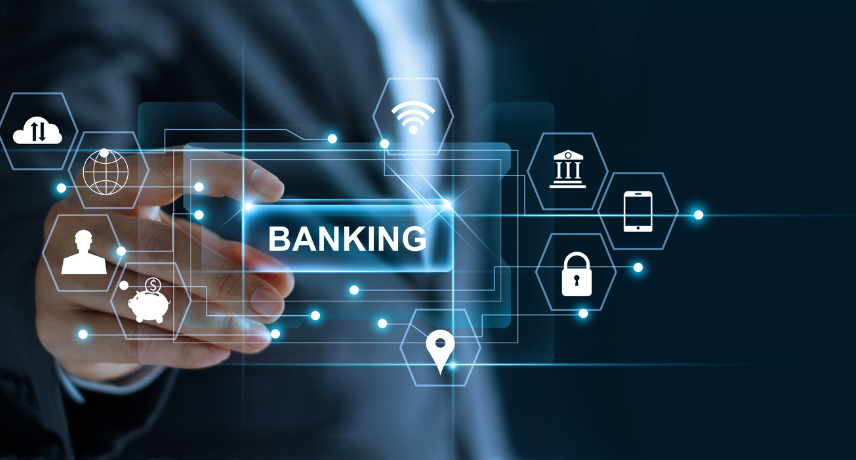
Enquiry Form
Top 7 Features Every Modern Banking Software Must Have
In today’s digital world, banks have seen a lot of changes. Because customers are expecting digital services to be convenient and safe, banks must switch to up-to-date banking solutions. Choosing the correct software helps the business work faster, remain compliant, and provide an outstanding customer experience.
In this blog, we’ll explore the top seven features that every modern banking software must have.
1. Core Banking System
The core banking system links all the activities within a bank’s operations. Banking software allows for account management, processes transactions, and can produce reports. Because of modern core banking systems, people can access their accounts and finish transactions everywhere at any time.
Integrating the main bank systems with other modules eases delivery of services on all channels and improves both efficiency and how customers are satisfied.
Benefits:
- Real-time transaction processing
- Seamless integration across channels
- Scalable infrastructure for growth
2. Online and Mobile Banking
With new online and mobile options in digital banking, firms are having to provide these solutions. Individuals now want to handle their finances, send and receive money, pay their bills and apply for loans with simple mobile and online apps. Currently, banking software needs to include simple and secure mobile features for customers.
Seamless mobile services make customers much more inclined to become loyal to the brand. It enables banks to let customers make deposits remotely, instantly transfer money, and receive current alerts on their phones.
Benefits:
- 24/7 access to banking services
- Secure and user-friendly mobile interfaces
- Increased customer engagement
3. Customer Relationship Management (CRM)
To succeed in today’s banking world, banks must give their customers a personalized service. When your banking software works with a CRM, you can easily see how clients interact, observe their habits, and give them suitable requirements.
It is possible for banks using CRM tools to market their products more effectively, offer tailored loans, and address customer complaints promptly by looking at their information. Customers will therefore value the bank higher and are more likely to stick with it.
Benefits:
- Personalized customer experience
- Improved customer retention
- Enhanced customer service
In this section, we will discuss CRM in banking, customer management software, and insights about banking customers.
4. Loan Management System
For banks and lenders, an appropriate loan management system is essential. The system handles the loan application through approval, as well as disbursing, servicing, and collecting on loans. Automated loans put less strain on workers who may commit errors, and they are approved faster, which makes the customer experience better.
A strong loan management system will have features to automatically assess eligibility, score credit, manage papers, and organize repayment. Compliance with regulations is easier, and the business wises up to managing its operations.
Benefits:
- Faster loan processing
- Improved regulatory compliance
- Better loan portfolio management
5. Payment Processing Systems
New banking software should be equipped to work with credit cards, debit cards, wire transfers, ACH transfers, and digital wallets. Banks hope to provide smooth payment services by using open data techniques.
Using various payment gateways allows customers to pay, make bill payments, or perform fund transfers conveniently and securely. The completion of transactions instantly enhances the way an organization works, making customers happier.
Benefits:
- Real-time payment processing
- Multiple payment methods
- Enhanced transaction security
6. Fraud Detection and Security
Keeping information and transactions safe is crucial in the banking industry. To prevent cyber threats, it is necessary to use modern fraud detection tools in the banking industry.
Today, banks rely on advanced systems that use AI and ML to spot any risky activities in customers’ accounts as they happen. At all times, reliable access controls, encrypted data, and MFA keep customer data secure.
Benefits:
• Real-time fraud detection
• Enhanced data protection
• Compliance with data security regulations
7. Reporting and Analytics
The latest banking software should have advanced tools to analyze and report data. The tools are used by financial institutions to check how the business is performing, review its financial condition, and base their decisions on reliable data. Through dashboards and reports, managers are able to review profits, debt repayment, customers’ behavior, and how the organization is working each day.
Predictive analytics may also be applied to predict trends and choose the best strategies for a business. As a result, banks take steps ahead of difficulties, discover new opportunities, and enhance their services.
Benefits:
• Informed decision-making
• Enhanced operational transparency
• Proactive risk management
Conclusion: Future-Proof Your Banking Operations with Modern Software
To remain competitive in today’s world, financial institutions and banks need to focus on using up-to-date resources. Improving customer satisfaction, automating tasks, and meeting regulations can all be possible with the right bank management features. Using updated core banking systems, mobile banking apps, CRM software, management tools for loans, and tools to detect fraud will allow your institution to handle work efficiently and remain competitive.
It has become necessary for banks to choose advanced banking software to grow and remain successful in today’s changing financial sector.